Alysia Angel, youth programs coordinator, Sacramento LGBT
Community Center
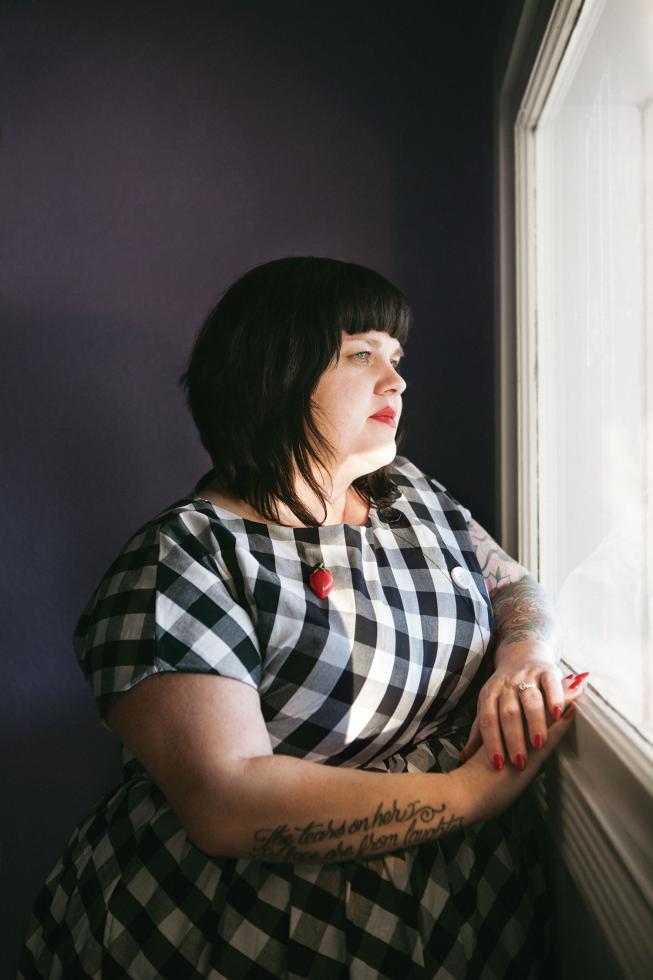
Alysia Angel was raised in Texas — The Bible Belt. When she was 15, her father caught her sleeping with her girlfriend. He yelled at her. He called her a dyke. He abused her. So Alysia left home. For years she lived on the streets.
“There comes a time in your life when you realize that your soul is your own,” Angel says now, years later. “But when you’re a homeless teen … you’re not there yet. There’s no support. It can feel hopeless.” She went through hell before she reclaimed her soul. Rape, drugs, sex work; she’s seen it all. She’s experienced it all.
And she’s one of the few that somehow made it to the other side. Now, at age 40, she’s the youth programs coordinator at Sacramento’s LGBT Community Center or, as she calls it, simply “The Center.” Every week she sees roughly 100 youth at The Center, many of them homeless, and she helps connect them with counseling, HIV testing and shelter. She knows that, like her, some of these kids will find a home and a brighter future, but she also knows that many of them — or, to be honest, the vast majority — will not. She knows, using the cold logic of statistics, it wouldn’t be surprising if one of them attempted suicide. Others will turn to drugs. Many will bounce from alley to alley, shelter to shelter. She knows the facts are bleak.
Forty percent of homeless youth are lesbian, gay, bisexual or transgendered, compared to just 10 percent for the larger population. LGBT teens are three times more likely to commit suicide than their straight counterparts. Across the United States, there are somewhere around 320,000 to 400,000 homeless LGBT youth. There are roughly 4,000 shelter beds total. Enough to sleep just one percent.
Homelessness is a problem. Age compounds the problem. But the issue of LGBT youth homelessness, in particular, adds an even tougher set of challenges for service providers in the Capital Region. Groups like Sacramento Steps Forward, the Wind Youth Center, the Gender Health Center and the LGBT Community Center are scrambling to help these kids and offer hope. But is it enough?
The Challenge
The roots of the problem, more often than not, begin with the family. “The No. 1 thing we see is family conflict,” says Suzi Dotson, executive director of Wind Youth Services, which provides emergency shelter for youth. “That can be anywhere on the spectrum from minor family conflict all the way to abuse, neglect, drug use or domestic violence.”
According to a 2011 survey of LGBT homeless teens, 68 percent said they felt rejected by their families because of their sexual orientation. Fifty-four percent cited some kind of abuse. Part of this, in a grim bit of irony, is driven by the larger cultural acceptance of homosexuality. Teens are coming out sooner.
“The average coming-out age has dropped from post-college age in the 1990s to around 16 today, which means that more and more kids are coming out while they’re still economically reliant on their families,” notes Alex Morris in Rolling Stone’s “The Forsaken: A Rising Number of Homeless Gay Teens Are Being Cast Out by Religious Families.” Gay marriage might have more acceptance than it did a decade ago, but that doesn’t always trickle down to the home.
The chain of events: A lesbian teenager comes out to her parents, isn’t accepted, faces shame or even abuse, leaves the house for the streets and then, alone, faces the misery of homelessness. She goes from bad to worse. “There’s a hopelessness that happens from being homeless,” Angel says. “And when you feel that you have nowhere to turn and that your own family hates you, or that they have turned on you, because of your sexual identity … you have no support. In a lot of cases, that’s what causes the suicide. They just don’t know that they have options.”
On top of this, Dotson says, being a teenager is a challenge in and of itself. “Their brains are changing, you have all the hormonal issues, so when you add in homelessness, you get a perfect storm.”
This storm gets even rockier when you layer in the issue of mental health. One study found that 65 percent of LGBT homeless youth have some kind of mental health issue, and Dotson, from her own experience, ballparks the number closer to 90 percent. The link between homelessness and mental health is well established, but it’s trickier to determine the causality — are people homeless because they’re mentally ill, or mentally ill because they’re homeless? Dotson says it’s not that black and white.
LGBT teens are three times more likely to commit suicide than their straight counterparts.
“A lot of it is the same mental health issues that everyone has, but when you’re living on the street without your basic needs met, the trauma is going to compound things,” she says. “It could be anywhere from minor depression all the way to schizophrenia. It runs the gamut.”
And in the acronym of “LGBT,” it’s the oft-forgotten Ts, in particular, that can face the most hardship. “The transgender community has the most intense stigma, the highest suicide rate, the highest drug use,” Angel says. “There’s still just not an understanding of why someone would want to transition. It’s last on the long list of [gender issues] that people will understand.”
In what might be the cruelest twist, LGBT youth often face discrimination even in the shelters. “The social environment continues to marginalize people who are LGBT,” says Dotson. “We have many youth who come to us who have been blatantly discriminated against when they ask for shelter. Or maybe they’re welcomed, but not affirmed. This continued marginalization builds and builds and builds.” Wind tries to buck this trend.
“We’re a gender-neutral shelter; our bedrooms are gender neutral, and you come as you are. If you say you’re male, you’re male; if you say you’re female, you’re female.”
What they’re doing to help
Not all the LGBT youth who walk through the doors of The Center are homeless. But Angel says, “All of them are at risk, whether homeless or not.” If there’s not acceptance from their family, it can lead to “depression, drug use, promiscuous behavior, homelessness.” When someone first steps inside The Center, Angel will assess their top three needs — sometimes it’s survival essentials like food and blankets; sometimes it’s help with their GED or finding a job. If she has enough donations on hand, she’ll give them a backpack with hygiene basics, a towel, safe sex materials, maybe a flashlight.
“Sometimes I can give blankets, scarves, gloves and hand warmers. It’s only possible from donations,” Angel says. “When people hear, ‘Youth need help,’ they often want to give food. But sometimes it’s the nitty-gritty things they really need — tampons, warm winter clothing, sleeping bags.”
The LGBT Center can then connect the youth with counseling, the River City Food Bank, WHY (We Help Youth) and the Gender Health Center. If they need urgent shelter, Wind can step in. Wind has two shelters — one for youth aged 12 to 17 and one for “transitionals” aged 18 to 24. But here’s the catch: Each shelter only has six beds. (A new grant means a dozen more beds are on the way.) While there’s no official count of exactly how many homeless youth there are in Sacramento, the number is certainly greater than 12.
Wind takes a proactive approach. Its Street Outreach Team works to find homeless kids where they hang out — the river, the parks, abandoned buildings, the railroad — and bring them supplies like food, clothing and bedding. Since teenagers are wary of authority, Wind employs a soft-sell approach and takes the time to build trust. “It usually takes five to seven contacts. As the relationship builds, we invite the youth to come to the drop-in center,” Dotson says. “That’s a place for youth to be who they are, relax, get food, listen to music and use computers. It’s nonjudgmental.” Drugs are not allowed on the premises, but Dotson says, “If you tell us that you’re using, we’re still going to take you in.”
Even if the youth is able to score one of the 12 beds at Wind, that solution, of course, is only temporary. What happens next? For those under 18, in most cases, the goal is reunification with the family. It can seem a bit like a Catch 22: A child might have left home because he wasn’t accepted, and now the goal is to return him to the very environment that put him on the streets. This means counseling. “We know that parents are really going to do the best thing for their kids 90 percent of the time. They love their kids more than any foster center could,” Dotson says. “[Child Protective Services] rarely needs to step in; by that age, it’s more about family conflict than child abuse.” Resolving this conflict — and making sure it’s a safe environment — is the mission of the counselors.
Many of these efforts are only possible thanks to Sacramento Steps Forward, which is, essentially, the bridge between federal funding (a $16.5 million grant was awarded to Sacramento by the Department of Housing and Urban Development) and various programs. They’re the link between policy and blankets. “It’s three times more expensive to take care of a homeless person on the street than it is to put them into housing,” says Maya Wallace, the nonprofit’s director of external affairs. “If we can create more capacity in the system, then we can do a lot more.”
Chance for the future?
Years ago, in the lowest of Angel’s lows, she and a friend became sex workers. “Things were getting dangerous … and my friend was killed,” she says, not elaborating. “And I realized I was going to become her. I’m going to die if I don’t do something differently.” She was 17 at the time.
Her grandmother gave her money to help get an apartment, she got a job doing daycare (she laughs at the irony) and she took two buses to work to make $4 an hour. She went to the thrift store and garage sales to buy clothes. “I practiced putting $2 into savings, every single paycheck,” she says. It took her about a year to get back on her feet. And now she’s helping others to do the same.
She’s seen enough data — the 100 youth in The Center each week, 150 in the summer — to know there’s one thing Sacramento needs: a shelter exclusively for the LGBT community. “Wind is very affirming, and they do a great job. But LGBT folks really like to have our own space,” she says. “It’s vital to us. It’s vital to our mental, emotional, physical and any other health need you can think of.”
So of all the LGBT homeless youth that Angel works with, what percent will really go on to be OK?
There’s a pause on the line. Finally she says, “Maybe 2 percent.”
“I want to say that 15 percent are going to be OK, but realistically, yeah, it’s more like 2 percent.”
This is the sober reality. Even with the tireless work of can-do people at places like Wind and The Center, the structural problems are just so entrenched. Funding is scarce. Beds are scarce. And perhaps compassion, too, is scarce.
“The biggest misconception is that people think youth are choosing to be homeless,” Dotson says. “They think, ‘Oh, they’re just rebellious teenagers. Oh, they’ll grow out of it.’ There tends to be a little more compassion with adult homelessness. But teens … most of them are escaping something. Usually it’s an unsafe environment. Usually they literally have no place to go. They don’t have the skills to go to work. And once you’re homeless, it’s very difficult to go back to school and to work.”
The good news is that Sacramento is, well, Sacramento. “The one thing that struck me about Sacramento is that people in this community are really dedicated to giving back,” says Angel, who grew up in Dallas. “Giving back to youth, to elders — they really believe that their money matters, and that this can go towards good. I’ve lived in other communities where that’s not the case.”
While she’s realistic enough to acknowledge the sobering 2 percent, Angel can also point to the small triumphs, the real change, the good that is being done. She recently worked with a transgender woman who had been teased, abused and bullied in other shelters. “In the past she had wanted to use the shelters’ showers, but she couldn’t use either shower — she wasn’t a man, she wasn’t a woman, so she just couldn’t shower,” Angel says. Then she came to The Center. She felt comfortable in her own skin.
“The first time she showered — she had a look on her face of joy,” Angel continues. “She was just happy to be clean. She sashayed around, dancing. They shouldn’t have to feel ashamed. They should be totally comfortable. Not to be super-sentimental, but this is the work we do.”
Recommended For You
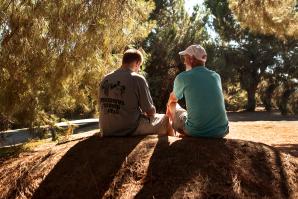
Seen & Not Heard
Child advocates could fundamentally shift foster care outcomes, if only there were more volunteers
Over half a million kids live in foster care in the U.S. as a result of abuse, neglect or abandonment. Because they can’t advocate for themselves, many become victims a second time, lost in an overburdened child welfare system that can’t pay close attention to each child. But one program is drastically improving outcomes for foster youth, despite the overwhelming odds.
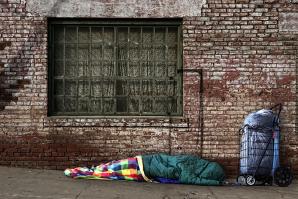
Fight of the Navigators
Connecting homeless to health care saves money in the ER
Regina Vasquez ended up homeless after her father passed away. Embarrassed by incontinence caused by Crohn’s disease, she found living out of her car a more dignified alternative to life in a public shelter. She worried constantly about her next visit to Sutter’s emergency department, and whether she would need yet another surgery. She estimates she made six to eight ER visits per year during her time on the streets.
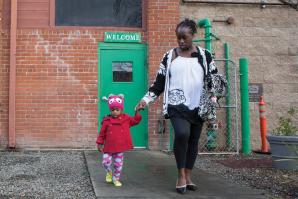
Under One Roof
Can rapid rehousing save local homeless families from life on the streets and in shelters?
Though a new rapid rehousing initiative may stymy the troubling trend locally, some providers remain concerned that a lack of mandatory supportive services and intensive case management may cause the program to exacerbate, not eliminate, the problem.
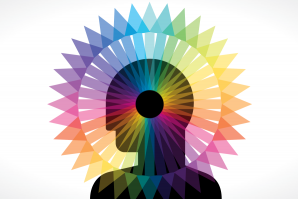
The Good Samaritan Gets Savvy
Modern benefactors are starting younger and taking a broader view of philanthropy
We are at a critical point in history. Longstanding social issues like hunger, poverty and lack of access to quality education continue to plague the world. All the while, wealth continues to grow at a staggering rate. This global dichotomy has given rise to new philanthropists who approach their discipline in a radically different way.



Comments
Excellent article highlighting the issue of homeless youth. California has between 20-25% of all the homeless youth in the country, yet only invests $1.1 million for homeless youth services. And that hasnt changed since 1988. We now have less emergency shelter beds as of the last comprehensive survey in 2010 than we did in 1990. And California is second worst in the country for the percentage of unaccompanied minor homeless youth who are unsheltered at 79.2%, only Nevada is higher at 88%. California can and should be doing a much better job at serving one of the most vulnerable populations in our state, runaway and homeless youth.
I am one of the homeless youth that both wind and q spot serves. I love both of these services so much and theyve helped me a lot. When I took a shower at LGBT center i felt so nice i wanted to dance too. If you read this please donate to either service as supplies are always needed and running out.